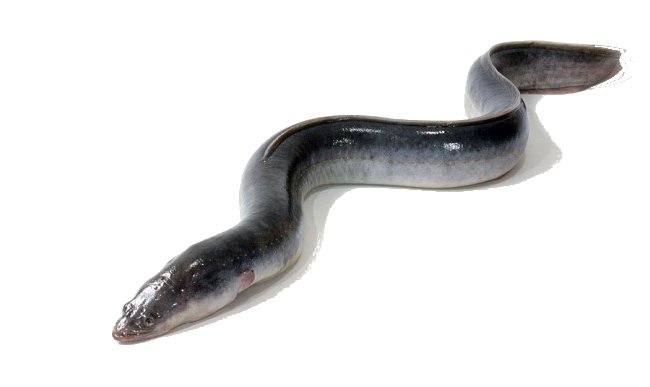
Illustration and Mural by Inês Barracha
Conger conger (Linnaeus, 1758)
Congridae (COE)EN - European conger / Conger
PT - Safio
FR - Congre d’Europe / Congre commun
ES - Congrio común / Congrio
PT - Safio
FR - Congre d’Europe / Congre commun
ES - Congrio común / Congrio

Scientific information in collaboration with Ana Magalhães FerreiraMarine biologist specializing in fisheries biology, biological sampling, taxonomy and marine biodiversity, sclerochronology, GIS.
︎︎︎ 300 cm
︎ 10 - 1170 m
︎︎︎ 20 years
︎ Solitary, Sedentary and Nocturnal
︎ Rocks
︎ Crustaceans, Fishes and Cephalopods
︎ Hook and
Traps
Least Concern (LC) means it has been evaluated against the Red List criteria and does not qualify for Critically Endangered, Endangered, Vulnerable or Near Threatened.
- The Conger, is a slender fish without scales, is a close relative of the eel, but lives only in salt water.
- The Conger has a dorsal fin that comes from the back of the pectoral fin and goes to the tip of the tail resulting from the fusion of the dorsal, caudal and anal fins.
- It is nocturnal and does not like daylight, remaining hidden in crevices or holes in the rocks, only coming out to hunt at night.
- It is a sedentary fish, and sometimes settles in sunken boats and ships.
- It has a big mouth and thick lips that hide two rows of pointed teeth.
- It is extremely voracious and very strong, giving the fisherman a lot of struggle when hooked and has the particularity of emitting perfectly audible sounds.
- It stays alive for a long time out of water.
- It only reproduces once in its life (like other species in the same family).
- Females lay eggs in the open sea between 2000 and 3000 m deep, after spawning they die.
- The larvae remain between 100 and 200m for the first two years, and when they reach 15cm they approach the coast.
Reproduction December to May
Type Oviparous
Female Maturation 200 cm; Age: 15 years
Male Maturation 75 cm; Age: 5 years
Fecundity 3 to 8 million eggs
Incubation Period 50 to 60 days
Minimum capture size 58 cm
